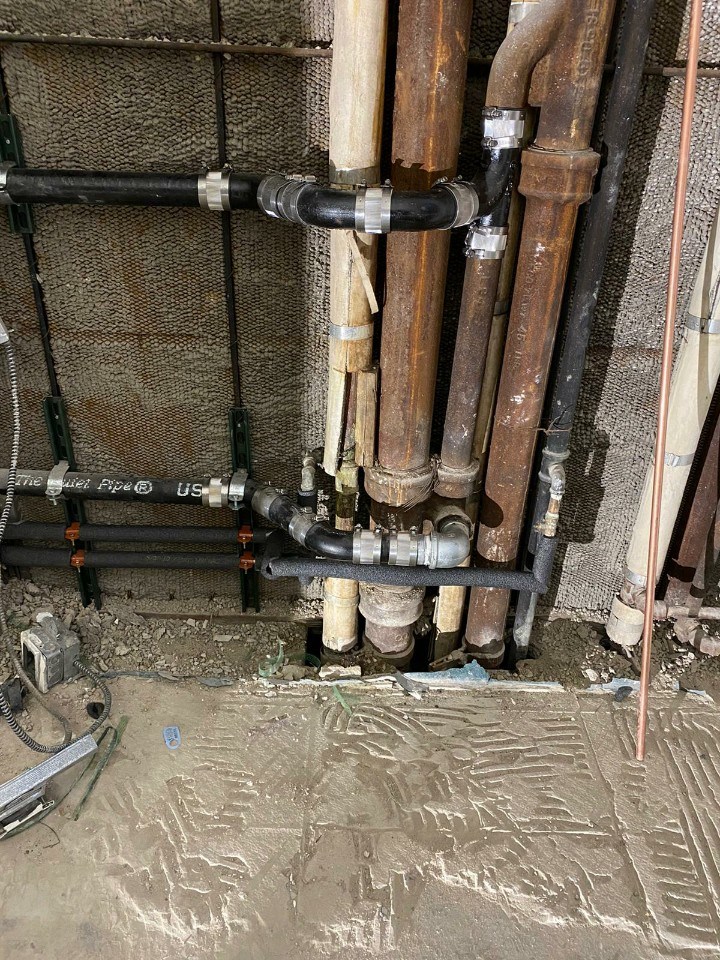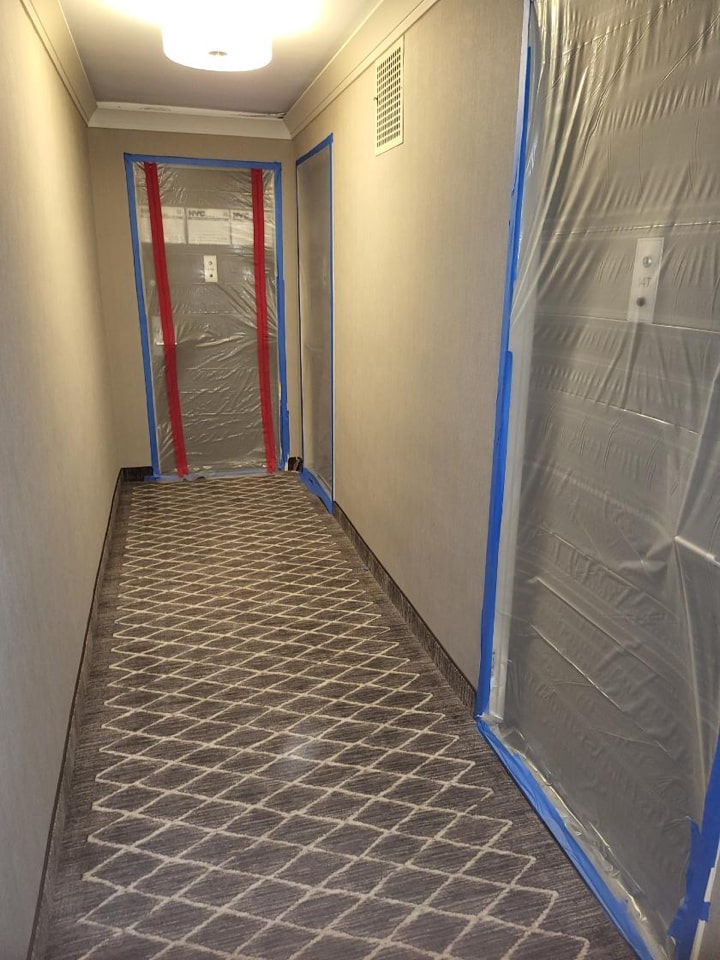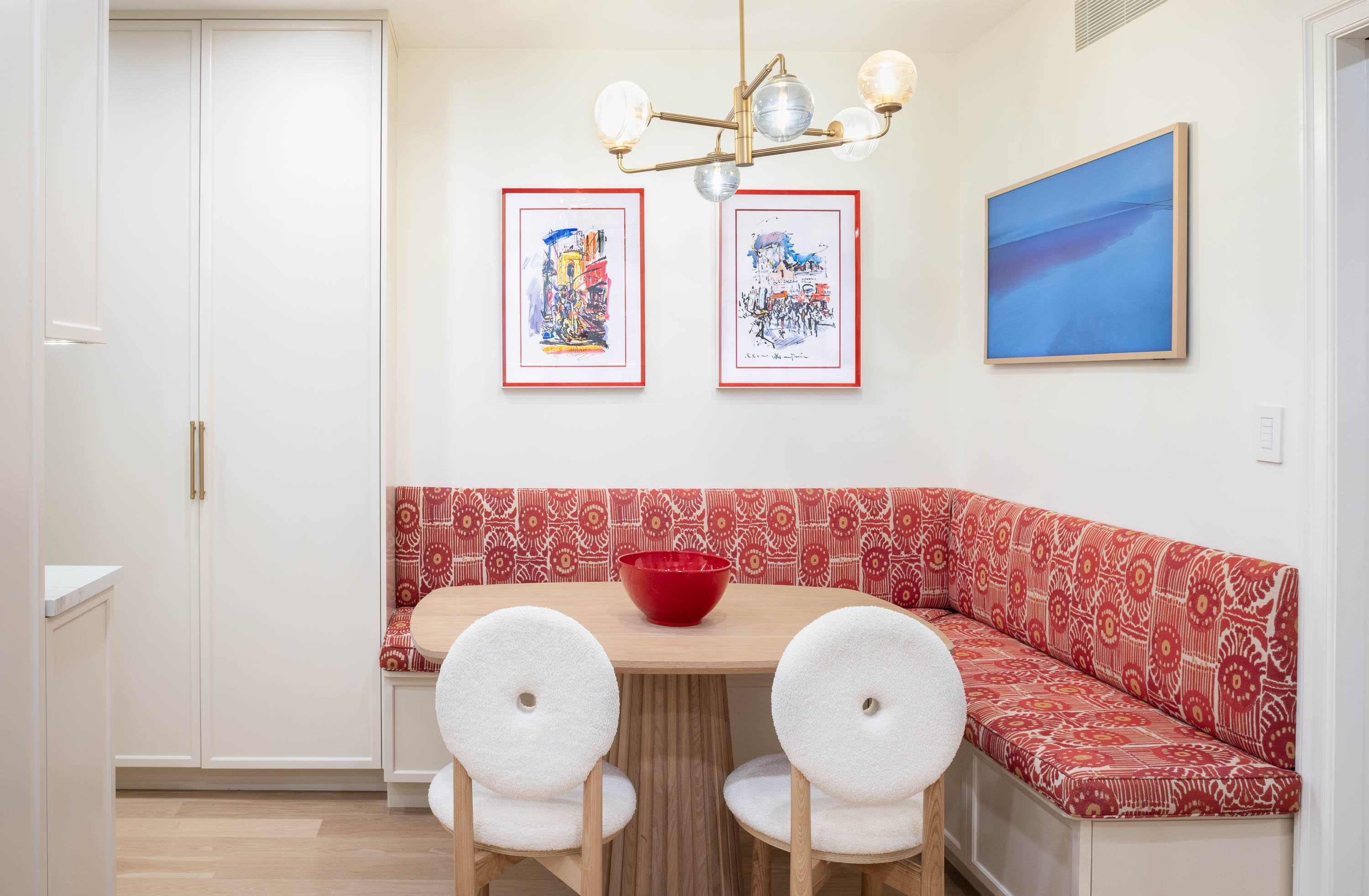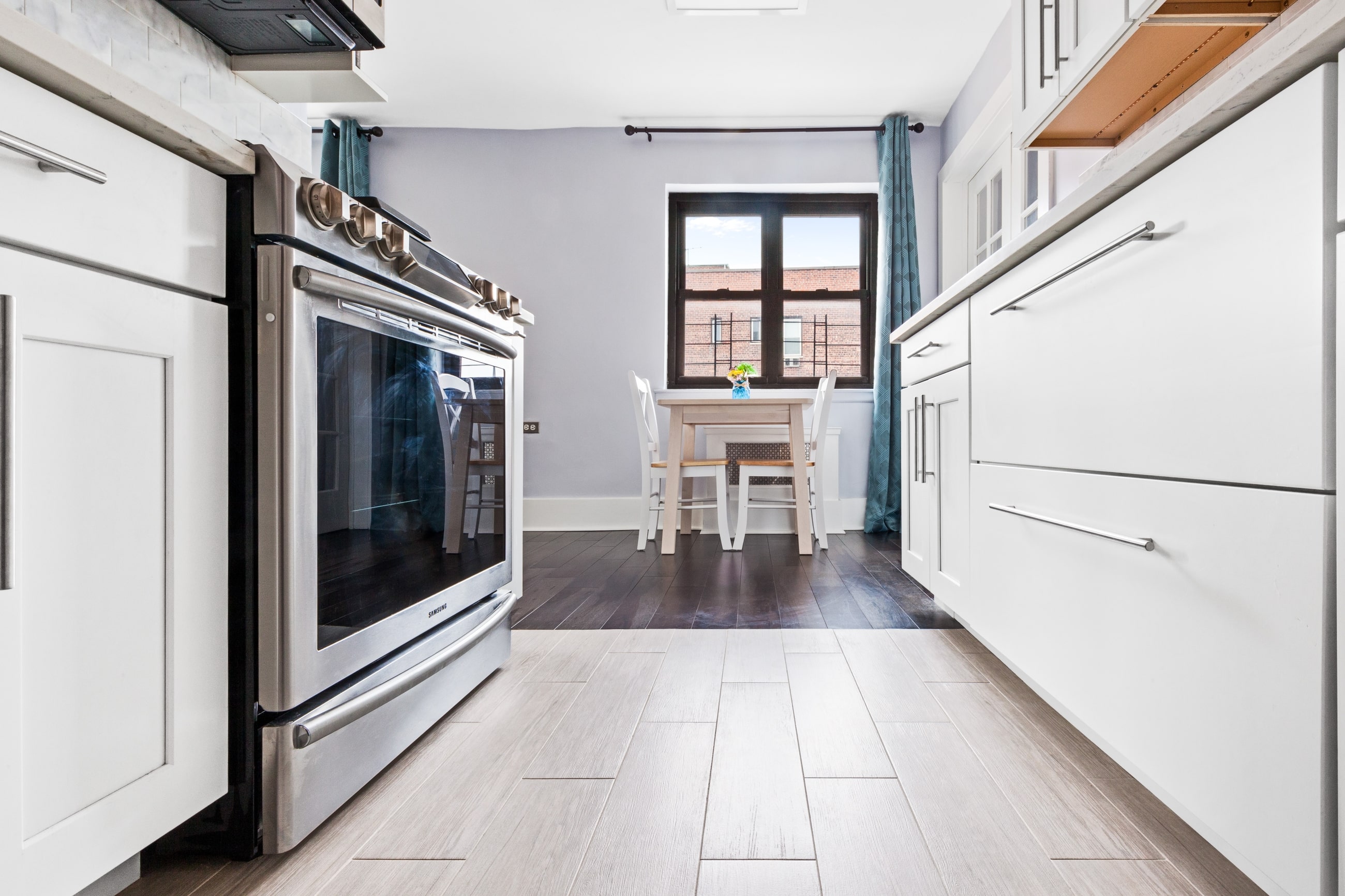Site Conditions That Have Material Impact On Renovations In NYC
Navigate the complexities of NYC renovations with our guide on critical site conditions you may not be considering, but we always do.
February 7, 2024
|

Site Conditions That Have Material Impact On Renovations In NYC
Not everything is always as anticipated when renovating one of the many residential property types in New York City.
Table of Contents
- Assessing Internal Building Conditions
- External Environmental Factors
- Addressing Construction Delays and Quality Control
Renovating your home in New York City presents a myriad of challenges unlike anywhere else in the world. Amidst towering skyscrapers and historic neighborhoods, the city's diverse residential spaces harbor a wealth of unique site conditions that can impact your renovation. From navigating spatial constraints and structural complexities to landmark limitations and regulatory hurdles, each project is shaped by its surroundings.
As one of NYC’s most esteemed design-build firms, we take pride in guiding clients through the intricate renovation process, considering both internal and external factors influencing their projects. Diligently balancing the preservation of architectural heritage with the aspirations of modern living, we ensure our clients' renovation dreams become a reality. Viewing site condition challenges as opportunities for innovation, we leverage our expertise to navigate complex regulatory landscapes, address limited access issues, and manage coordination with neighbors. Through comprehensive support and expertise, we empower our clients to make informed decisions and achieve their renovation goals with confidence. Now, let’s explore the site conditions that may impact your New York City renovation.

[#Internal]Assessing Internal Building Conditions[#Internal]
Before embarking on any renovation in Manhattan or Brooklyn, a thorough assessment of all internal building factors below is imperative. This diligent examination serves as the foundation for informed decision-making throughout your renovation, ensuring potential challenges are identified and addressed proactively.
Outdated Wiring
Existing electrical systems in older buildings (many pre-war) may not meet current safety standards or accommodate modern electrical needs. Rewiring may involve replacing outdated wiring, upgrading electrical panels, and installing additional outlets to meet current code requirements. Ensuring compliance with electrical codes is essential for the safety of occupants and to prevent potential fire hazards.
Plumbing Issues
Aging pipes and fixtures are common in older NYC buildings and can lead to leaks, low water pressure, or water discoloration. Identifying and addressing plumbing issues may involve replacing corroded pipes, upgrading fixtures to improve efficiency, and installing water-saving devices.
Water Damage
Undetected leaks or moisture infiltration can cause significant damage to building materials and compromise structural integrity. Assessing for water damage requires a thorough inspection of plumbing systems, roofing, windows, and exterior cladding to identify potential sources of moisture intrusion.
Hazardous Materials
Asbestos or lead paint, commonly found in older buildings, pose serious health risks if disturbed during renovation. Specialized remediation procedures are necessary to safely remove or encapsulate hazardous materials and ensure a healthy living environment. Compliance with regulations governing the handling and disposal of hazardous materials is essential to protect workers and occupants from exposure.
Structural Concerns
Although very rare, weak or deteriorating structural components, such as walls, floors, or ceilings, can compromise the stability and safety of a building. In older pre-war buildings or neglected units that have never been renovated, structural assessments may be required. This could involve tests for structural integrity, identifying load-bearing walls, and determining the need for reinforcement or repairs. Addressing structural concerns early in the renovation process is critical to prevent further damage and ensure the long-term stability of the building.
Mold Infestations
Moisture-prone areas, such as bathrooms, kitchens, and basements, are susceptible to mold growth if not properly ventilated or waterproofed. Mold infestations not only affect indoor air quality but can also cause respiratory problems and exacerbate allergies or asthma. Remediation of mold infestations may involve removing affected materials, improving ventilation, and addressing moisture sources to prevent recurrence.
Wall Conditions
Cracked plaster walls can pose significant challenges during NYC renovations, often necessitating skilled interventions such as skim coating or specialized treatments. Our team carefully evaluates these issues to develop tailored solutions that ensure a smooth and flawless finish, restoring structural integrity and aesthetic appeal to your space.

[#External]External Environmental Factors[#External]
After evaluating internal factors that could affect your NYC renovation and determining the feasibility of your vision, the next step is to navigate external factors beyond the confines of your personal space - all of which can have considerable influence on your project's progression.
Building Regulations
Navigating the complex regulatory landscape of New York City's building codes and zoning laws can be a daunting task for renovation projects. As detailed in our guide on What To Know About Renovation Approvals And Permitting In NYC, building codes dictate the standards for construction, including safety measures, structural requirements, and environmental considerations. Zoning laws, on the other hand, determine how properties can be used and developed within specific areas of the city. Understanding and complying with these regulations are essential to ensure that the renovation project meets legal requirements and obtains necessary permits. This process often involves careful planning, thorough documentation, and coordination with city officials to navigate the intricate maze of regulations effectively.
Limited Access
Restricted access to the renovation site due to factors such as narrow streets, limited parking, or building regulations can pose significant challenges for logistics and project management. Narrow streets and limited parking spaces may restrict the delivery of materials and equipment, leading to delays and increased costs. Building regulations may impose restrictions on the use of public spaces or require permits for temporary closures, further complicating access to the site. Effective planning and coordination with contractors, suppliers, and city authorities are essential to mitigate these challenges and ensure smooth project execution.
Noise Restrictions
Adherence to noise ordinances and regulations, particularly in residential areas, is crucial to minimize disruptions and maintain positive relationships with neighbors during the renovation process. Noise ordinances typically specify permissible noise levels and designated hours for construction activities to minimize impact on surrounding communities. At Gallery, we schedule work during designated hours, implement noise-reducing measures, and communicate proactively with neighbors about our upcoming renovation plans on their floor to help mitigate noise-related issues and ensure compliance with regulations.
Special Considerations in Historic Districts
Recognize that properties in historic districts or landmarks may have additional compliance requirements such as the Landmark Preservation Committee (LPC). If you’re making exterior changes to your property, there’s a good chance you’ll need approvals from preservation boards and will be adhering to specialized guidelines.

[#Control]Addressing Construction Delays and Quality Control[#Control]
With an understanding of what to expect ahead of time in regards to internal and external site conditions and how they may factor into your renovation, you can see why addressing potential construction delays and ensuring quality control are paramount to delivering a seamless and exceptional outcome. Let's delve into some common causes of delays, strategies for anticipation, and the crucial role of quality control in maintaining project integrity.
Common Causes of Delays
As noted in our Timely Home Renovation Stats & Facts For 2023 blog, renovation projects are often susceptible to delays due to various factors such as unforeseen structural issues, supply chain disruptions, inclement weather, and regulatory approvals. Anticipating these potential roadblocks is essential for effective project management.
Anticipating Delays
To anticipate delays, thorough planning and risk assessment are key. At Gallery, we engage in detailed site assessments up front in our design-build process, collaborating closely with architectural experts and engineers as needed, while maintaining open communication with suppliers and regulatory authorities to help identify potential issues early on and develop contingency plans.
Overview of Quality Control
Quality control is the linchpin of successful renovation projects, ensuring that workmanship meets high standards and that materials and finishes are of the utmost quality. In a design-build approach, quality control is integrated throughout the entire process, with the design-build team assuming responsibility for overseeing all aspects of construction.
Determining Responsibility for Quality Control
In a design-build framework, the responsibility for quality control typically falls on the design-build firm. With a single point of accountability, design-build ensures seamless coordination between design and construction, allowing for real-time adjustments and meticulous attention to detail.
Mitigating Site-Related Delays
Site conditions, as discussed earlier, can significantly impact project timelines. To mitigate potential delays stemming from site-related issues, proactive measures such as conducting thorough site assessments, addressing structural concerns early in the planning phase, and establishing clear communication channels with all stakeholders are essential.
Conclusion
As we close our look at various pre-existing site conditions and their impact on New York City renovations, it's clear a successful and stress-free renovation experience calls for an experienced and detailed partner to help guide your vision through the crooked path to success. From the initial assessment of building conditions to the meticulous management of construction delays and quality control, every step of the journey requires careful consideration, proactive collaboration, and unwavering dedication to excellence.
As a full-service design-build firm in New York City, we approach these challenges with dedication and enthusiasm. We see each project as an opportunity to merge creativity, innovation, and craftsmanship. Our aim is to deliver renovations that enhance the unique character of New York City while also improving the lives of our clients.
Considering an apartment renovation in New York City? View our portfolio of NYC apartment renovation before and afters, learn more about Gallery, or contact us today.
We are an award-winning design-build firm in New York City with a full-service approach to renovations in Manhattan and Brooklyn that includes everything from interior design and architecture services to filing board permits and construction management. We’re experts in pre-war apartment renovations, apartment combinations, room creations, full gut renovations and all that falls in between. Let us bring your dream home to life.

.png)
.png)





.jpg)

%20(2).jpg)


.jpg)
%20Gallery%20KBNY.JPG)


